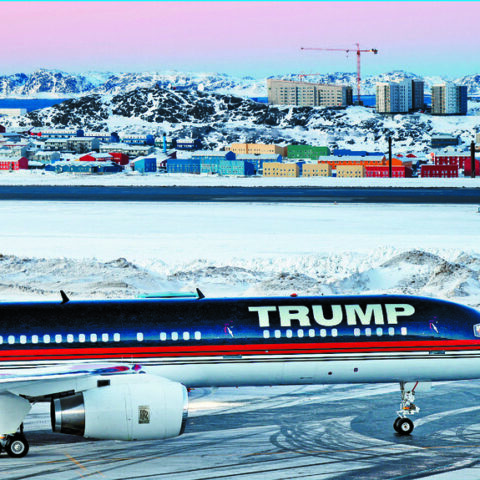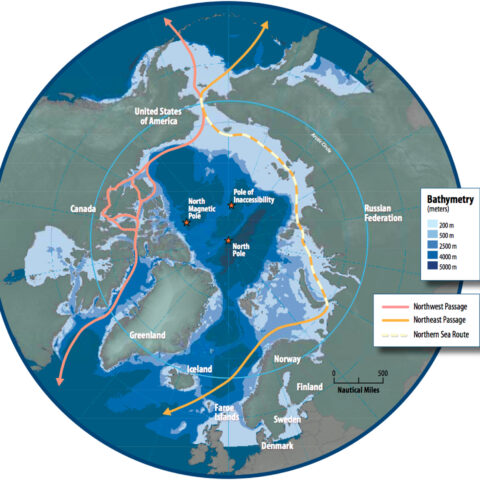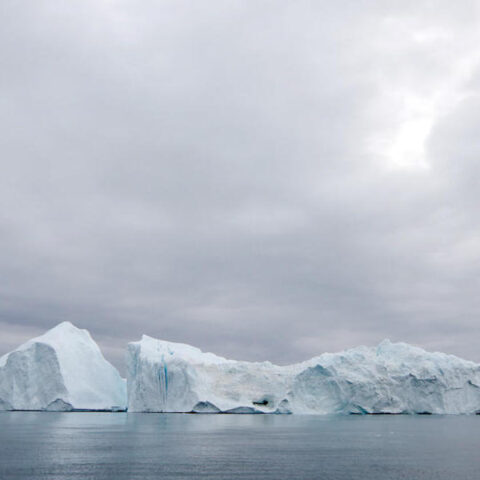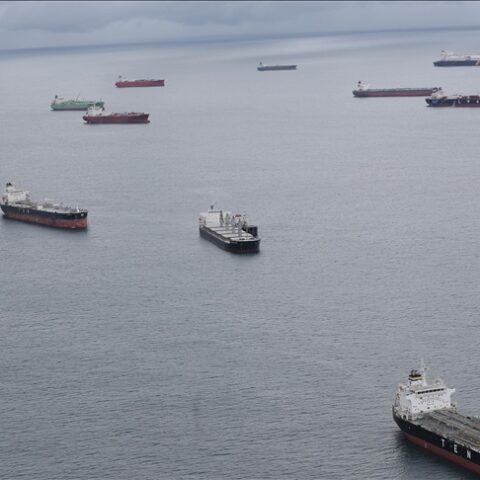Geopolitics and Technology
Welcome to the Geopolitics and Technology Hub. Our mission is to explore the intersection of emerging technologies and global power dynamics. As great power rivalries intensify, technological innovation is no longer just an economic driver—it is a strategic asset shaping national security, economic resilience, military power, and global influence. From the AI arms race and cyber security, to secure supply chains and duel use technologies, this multi-disciplinary hub will work across our BTPI hubs, and with international partners, to analyze how and where states compete for technological dominance.
GEOPOLITICS AND TECHNOLOGY NEWS
TPI Simulation Tests Arctic Technology and Security Risks

TPI co-hosted The Svalbard Consensus? workshop in London on November 19th-20th. Funded by the Royal Navy, and held in partnership with Loughborough University, the workshop was built around a full day of expert briefings and a multi-stage strategic crisis simulation.
The simulation examined how emerging technologies, critical infrastructure, and climate change are reshaping security dynamics in the Arctic. As sea ice retreats and access to new routes and resources expands, Svalbard has become a focal point for Russian military pressure, growing Chinese interest, and increasing technological vulnerabilities.
Participants, including high-level military and policy practitioners, responded to a series of escalating crisis injects including extreme weather, Russian submarine operations, and Chinese vessel activity, while managing pressure on technology-dependent systems central to Svalbard’s survival. These included subsea communications cables, satellite ground infrastructure, energy generation and fuel logistics, and digitally enabled supply chains for food and water.
The Royal Navy-funded exercise builds on TPI’s expertise in technology-driven strategic simulations, using immersive scenarios to test how actors operate under conditions where civilian and military technologies, from satellites to undersea cables, become central targets and sources of escalation. Insights from the simulation will build on summer workshops with members of Congress in DC and policy makers in Iceland, to inform TPI’s ongoing work on Arctic security, emerging technologies, and critical infrastructure resilience.
Find out more about the work of the TPI Geopolitics and Technology Hub here: https://publicpolicy.cornell.edu/btpi/research-hubs/geopolitics-and-technology/
Cornell Hosts Indonesian Economic Leader on Critical Minerals and the Geopolitics of Technology
BTPI Takes Bipartisan Security Simulation to Capitol Hill

What happens in the Arctic doesn’t stay in the Arctic—especially as climate change, nuclear deterrence, duel use technologies, and renewed great power competition converge to reshape the region’s strategic importance. In response to this growing complexity, members of BPTI have been working in partnership with the Institute of Politics and Global Affairs to develop a cutting-edge national security simulation to help policymakers confront emerging Arctic challenges.
On July 14th the team took this bipartisan simulation to Capitol Hill and engaged in broader meeting with Danish and Greenlandic diplomats on Arctic Security. While the stormy D.C weather delayed the exercise, its aim was to mirror real-world dilemmas, encouraging members of Congress to test policies, strategies and build resilience in the face of great power rivalry. A second running of the simulation will now take place with Congressional staffers in the Fall.
A special thanks to our Non-Resident Senior Fellows Paul Lushenko and Keith Carter, and to our fellows Elizabeth Redmond and Kayla Schechter for the months of hard work that went into researching and planning the simulation. Thanks also to Alexandra Gier and the IPGA team for their organizational leadership,
For more on BTPI’s work on Arctic Security, check out our Geopolitics and Technology Hub: https://publicpolicy.cornell.edu/btpi/research-hubs/geopolitics-and-technology/

The Tech Policy Institute was proud to convene the panel Soft Power, Hard Questions: Debates in Arctic Science and Technology Cooperation at the Arctic Circle Assembly in Reykjavik. We would like to thank Dr. Karl Attard, Dr. Gregory Falco, and Professor Caroline Kennedy-Pipe for their thoughtful contributions to a wide-ranging and forward-looking discussion.
Our session, led by Executive Director Dr. James Patton Rogers, formed part of a growing set of panels grappling with the security implications of Arctic research in an era of intensifying great power competition. Across the Assembly, experts raised critical questions surrounding defence cooperation, meaningful scientific collaboration, technological dependencies, and geopolitical tensions.
We were especially pleased to hear perspectives from Admiral Giuseppe Cavo Dragone, Chair of the NATO Military Committee, alongside Icelandic policymakers and partners who highlighted emerging regional concerns around critical infrastructure resilience, emergency response capacity, and national security.
TPI’s work in this area continues through ongoing strategic simulations and a forthcoming multidisciplinary book project on Arctic security. President Guðni Th. Jóhannesson of Iceland will also join us in March 2026 as a prestigious Cornell Messenger Lecturer.
Read more here: https://www.publicpolicy.cornell.edu/btpi/research-hubs/geopolitics-and-technology/
Cornell names President Guðni Th. Jóhannesson of Iceland as 2026 Messenger Lecturer

Cornell has named President Guðni Th. Jóhannesson of Iceland as 2026 Messenger Lecturer. The Messenger Lectures are the highest recognition of scholarship awarded by the University. For close to 100 years, they have brought to campus an outstanding range of researchers and innovators from across disciplines. As a result of this award, secured through TPI’s Geopolitics and Technology Hub, President Jóhannesson (Icelandic Head of State, 2016-2024), will spend two weeks on campus in March 2026 delivering public lectures and engaging with faculty and students, offering a rare opportunity to learn from a world leader at the intersection of history, geopolitics, and technology.
New BTPI Report: “U.S. Must Invest in Biomining to Secure Mineral Independence”

The Cornell Brooks Tech Policy Institute (BTPI) has released a new report urging federal action to advance biomining, the use of microorganisms to extract metals from ores and waste streams. The study highlights that critical minerals such as rare earths, cobalt, nickel, and lithium are indispensable for U.S. defense systems, clean energy, and advanced electronics, yet China controls more than 80–90 percent of global refining capacity—creating chokepoints that expose serious national security risks. While biomining offers cleaner, lower-cost processing that can tap low-grade ores and reduce environmental harms, the U.S. remains at the research stage with startups and pilots but no commercial-scale operations, falling behind countries like Chile and Finland. The report’s findings underscore that without stronger federal investment to bridge laboratory breakthroughs into industrial deployment, the U.S. risks losing the opportunity to secure domestic mineral independence and safeguard its strategic resilience.

Building on BTPI’s expertise and experience in Arctic geopolitics and duel-use technologies, the Geopolitics and Technology Hub has launched is inaugural ‘Arctic Security and Technology Project’. You can see a range our of Arctic research below, along with a list of our expert project affiliates. You can also read more about our ongoing Arctic focused collaboration with colleagues from Denmark, Iceland, the US, and UK here: https://www.highnorthnews.com/en/entire-northern-hemisphere-can-be-controlled-space-above-arctic
 TIME MAGAZINE: History Explains Trump’s Interest in Greenland—And Why Buying It Won’t Be So Easy
TIME MAGAZINE: History Explains Trump’s Interest in Greenland—And Why Buying It Won’t Be So Easy
Donald Trump spent a noteworthy chunk of the transition period provoking controversy—and insulting NATO allies—with his proposals for expanding the U.S. Maybe most prominently, he has repeatedly discussed buying Greenland from Denmark, a stance he robustly reaffirmed on his first day in office, earlier this week…
 THE GEOGRAPHICAL JOURNAL: Arctic drones – A new security dilemma
THE GEOGRAPHICAL JOURNAL: Arctic drones – A new security dilemma
Over 100 countries now have a military drone programme comprised of either armed or unarmed systems. These drones are used to project power, fulfil national security objectives and signal political interest in disputed regions. As the climate crisis transforms parts of the Arctic, considerable investment is taking place in remote systems that can both monitor for ‘unwanted guests’ and engage in military activity. In this context, drones, specifically unarmed military drones, are becoming the favoured technology of Arctic states. Denmark, Iceland, Canada, Russia and the United States are all now using drones to protect national interests, symbolise sovereignty and enable a watchful eye to be cast on neighbours and newcomers, such as China. This article argues that while the introduction of military drones may be seen as stabilising in the first instance, in the longer term these systems are likely to escalate tensions, leading to a new drone-based security dilemma. Of particular note is the ‘virtual’ net of detection being built by Russia. This net is reliant on drones, in partnership with additional military infrastructure and hardware, and has been developed by Moscow to establish a military capacity to detect and respond to external actors across and perhaps beyond the Russian Arctic.
 BTPI Senior Fellow Leads NATO Funded Subsea Cable Infrastructure Project (HEIST)
BTPI Senior Fellow Leads NATO Funded Subsea Cable Infrastructure Project (HEIST)
A mystery fault has taken an undersea internet cable between Germany and Finland out of service…
 Reuters: ‘We’re all having to catch up’: NATO scrambles for drones that can survive the Arctic
Reuters: ‘We’re all having to catch up’: NATO scrambles for drones that can survive the Arctic
 The Hill: Trump provokes anxieties with Greenland, Panama Canal military talk
The Hill: Trump provokes anxieties with Greenland, Panama Canal military talk
President-elect Trump’s refusal to rule out military action to attain his ambitions of acquiring the Panama Canal and Greenland has sparked some stern responses overseas and spurred a global debate over how seriously to take the incoming president…
Project Affiliates:
- Dr JF Belanger (Royal Danish Defense College, DK)
- Dr James Patton Rogers (Public Policy, Cornell, US)
- Professor Caroline Kennedy-Pipe (Politics, Loughborough University, UK)
- Dr Gregory Falco (Engineering, Cornell, US)
- Professor Bjarni Már Magnússon (Faculty of Law, Bifröst University, Iceland)
- Dr Karl Attard (Marine Science, University of Southern Denmark, DK
